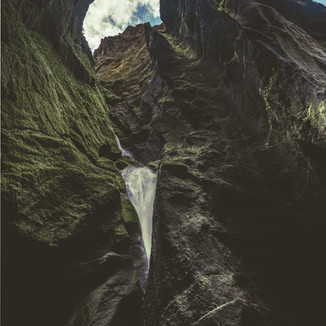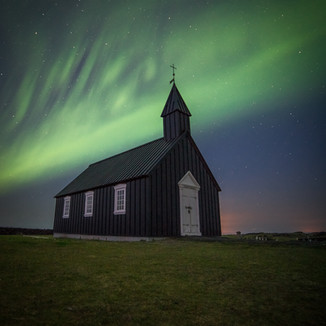Heading to Iceland ?
- andrew_abroad
- Sep 18, 2017
- 10 min read
Are you planning a trip to Iceland, but have a few questions you are having a hard time finding answers to, or are you looking for a easy guide to help you out when planning your trip ? Then you have found it.

1. Flights Flying to Iceland is exactly like flying to any other city, in fact the services at the Keflavik Airport ( Iceland's international Airport) are much better than a lot of other places I have travelled to. At the airport you are greeted with free Wi-Fi, car rental stores, and an easy to find transfer into the city of Reykjavik. There are a number of Airlines that fly to Iceland, such as Icelandair, Air Berline and WOW.

2.Airport to Reykjavik
First time I went to Iceland I had no plans at all ! Nothing, no airport transfers, no accomodation ! I walked outside the Airport and started walking along the lonely road heading towards Reykjavik. At first finding someone to hitchhike with seemed pretty hard, as most people driving along the road were tourist who just got in their car rental and were very cautious as this had most likely been their first couple minutes driving on the Roads, however the seemingly difficult task became much easier once I had walked onto the main road and within minutes I was picked up by the most friendly Icelander.
Alternative ways of getting into Reykjavik from Keflavik are;
1. Bus transfer from Keflavik to Reykjavik costing 2500 ISK
11. Taxi Services, however this is a much more expensive option as the distance between the airport and the city is over 50km
111.Renting a car at the Airport ( I will give you my car rental company recommendations below)

3.Accomodation in Reykjavik and around Iceland
As you may have heard Iceland is expensive, accomodation is expensive. A shared dorm room can cost anywhere from 20-200 Euros, private accomodation much more depending on the time of the year you travel. For those who like staying at Hostels, I have found that Hostelworld.com is not that good for Iceland because they don't advertise as many promotions as Booking.com. If you are traveling during the high tourist seasons June - August, it would be wise to pre book accomodation as rooms may become very expensive or run out. If you stay in a guesthouse most of the time breakfast will be included, which might not seem much but in a country where a guesthouse charges a average of 2500ISK for breakfast per person, its a to consider when choosing your accommodation.

4. Camping
For the first 10 Days of my 3 months in Iceland I camped around the Ring road. As far as my knowledge goes, you are allowed to camp as long as you are not too close to a road, on cultivated land or in a national park. Icelanders are very nice people, but due to influx of tourism some can get a bit worked up about people staying on their land ( which is understandable ).
An alternative to Wild camping would be camp sites, which are great for many reasons
1. Power supply
11. Showers
111.Some ever have washing machines
1v.You don't need to worry about being on someones property
v. Some even have Wi-fi
v1. Great way of meeting people
A average cost for a camp site in high seasons is 1400 ISK per person, and in low season 1000 ISK per person.

5. Clothes Summer
Summer in Iceland is wonderful, even though the temperature doesn't get very high the sun still burns strong. Brining Sunscreen, Hat and sunglasses is a MUST. In addition these are the minimum I would travel in Summer :
1. Rainproof / windstopper Jacker - Icelandic weather changes are more dramatic than the current American election campaign
11.Long pants/jeans ( they don't need to be waterproof but quick dry would be beneficial )
111. A long sleeve shirt
1v. A short sleeve shirt ( it can also get warm enough to bust out that bad boy )
v. A good jumper
Summer temperature doesn't get very low, but in extreme cases you might see temperatures of 0-10C, however most of the time you are looking at 15-22C.

6. Clothes Winter
The winter in Iceland is not as cold as I imagined, saying that the wind is can be extreme, and the continious pounding of the rain, wind and snow can be very disheartening. So bringing proper clothes is a must.
Clothes I recommend for Winter
1. Rainproof / Windproof jacket
11. A really good jumper/hoodie
111. Another good jumper, preferably a tight fit to keep close to your body
1v. Jeans or hiking pants ( cold weather )
v. Good thermals, bottom and top
v1. Good Winter boots. They don't heave to be extreme, but should be waterproof boots.
v11. Gloves and a Beanie
As well as the above always bring a pair of comfortable shoes

7. Alcohol
If you plan on drinking in Iceland I highly recommend you buy at the Duty free on your way into the country. Drinking in Iceland is very expensive, even if you come from a country like Australia, where we pay three different taxes for alcohol. A price example at a Guesthouse;
Beer 500ml: 1000 - 1300ISK
Glass of Wine: 1050 - infinity ( This obviously can get much higher, depending on the quality of wine )
Bottle of Wine: 4500 - 10000
Spirits: 1200-1800 per shot
Local Icelandic drinks to try out;
1. Brennivin - A clear spirit unique to Iceland and its long winters, it's surprisingly smooth and well prices (for iceland)
11. Einstok - Einstok pale ale and white ale are easily my favourite Icelandic beers. Others to try out would be Viking, Gull, and Borg
Alcohol is not sold in normal stores such as Bonus or Netto but rather has its own designated store located right next to the big shopping centre. However you can buy low Alcohol beers in Bonus for a fraction of the price of full strength. 500ml half strength beer at bonus goes for around 100ISK.

8. Food
So by now you are well aware that drinking in Iceland is expensive, but I'm sorry to say this eating is the same story. Eating out anywhere, any type of food is expensive. An example of how outrageous eating out is;
1.burger can cost you anywhere from 1500 - 3000 ISK
11. Soup at a Guesthouse is around 1400ISK, but at the M1 (petrol/gas station) in Borganes it will set you back 1800ISK
111. A hot dog ( which are pretty popular in Iceland ) is one of the only things you can buy that are kind of well priced. A plain hotdog is around 500ISK
1v. Most Guesthouses (reason I keep bringing up guest-houses is because once you leave Reykjavik, this is where all the restaurants are) serve a Fish or Lamp main dish which usually cost a) Fish: 3500-4000 ISK b) Lamb 3700-5000ISK

9. Transport
If you wish to get out of Reykjavik there are only a couple options you have, as far as transport goes.
1. Rent a car - If you can afford it, this is by far the best way to see Iceland. It allows for you to take your time, explore, and is by far provides the most amount of comfort. Drinking in Iceland when the weather is normal is very easy, the roads are not congested, most are built well and most other drivers are careful. However Icelandic weather can get pretty nasty but don't let this dishearten you, just take it easy and drive slower.
We went with www.bluecarrental.is and we're very please. The price was fair, insurance included almost everything except ash (which is pretty rare), and we also got a free upgrade. When returning the car they were very good with the process and didn't over examine the car like some companies. Infant the car was pretty dirty and they didn't say anything about it.
In addition if you are from USA, Canada, Australia, or the middle east you will cry when you see the fuel prices. An average petrol 95Octane is around 200ISK
11. Hitch Hike - For some this might sound crazy, but Iceland is one of the safest countries in the world for Hitch hiking as well one of the easiest to obtain a ride. More of a surprise is that most of the people who pick you up are actually locals and are as interested in your story as you are in theirs. Its a great way to actually meet local people, free way to travel and it's relatively hassle free, as you don't need to book busses or have time restrictions like when renting a car.
If you have never hitch hiked before have no fear, just stand in a safe place where you are visible but not in danger, have a place for the car to pull over ( if they are travelling 90Km/h, which are most roads in Iceland then they need a bit of braking distance and a place to pull over ), smile and keep a good attitude :)
111. Tour Buses - This is a great way to travel if you are in Iceland for a short time, like only a couple days. There are tours of the Golden Circle and many other destinations within a day's drive from Reykjavik. However buses are usually expensive, and you guarantee where ever you go will be full of tourists ( because you are on a bus full of tourists haha )
1v. Public Transport - Public transport around Reykjavik is very efficient, however outside of Reykjavik is a different story. There are buses to Borganes, but any further than that is a mission. Public transport is definitely not a good way of going around Iceland :(

10. Grocery Shopping
While Iceland is expensive in every sense, you can still eat pretty cheap if you shop at the right places, just don't expect to be paying the same price as almost any other country. The two big Grocery shops are "Bonus" and "Netto", and they are located all around Iceland, at almost every big town. (however these big towns are pretty far apart so make sure to stock up). Reykjavik has a 24Hour Netto in town so its a good places to stock up before the road trip.

11. Mobile Phones / Wifi / GPS
This is most likely going to be a shock to some but you don't need to being a GPS, you don't need to buy a simcard, and you don't need a satellite phone (unless you are going hiking in extreme remote areas)
1. Free Wi-Fi is everywhere, so keeping contact with loved ones back home via apps such as "vibes" or "Skype" is super easy and cheap.
11. Apps like "Maps.me" allow you to download the map of Iceland and use you In-built phone GPS, which works exactly the same as a independent GPS unit and does not require any reception or even a sim card.
111. Most Petrol/Gas stations have free Wi-fi, as well as any guesthouse or cafe.
1v. In addition, most camp sites also have power points in the toilets area, so charging all your electronics is not that difficult.
v. In case of an emergency call 112 which connects you to emergency services (you don't need a sim card for this)

12. Route 1 - Detour recommendations
Route 1 is the most popular itinerary when doing a road trip around Iceland for obviously reasons, it covers most tourist sights, the roads are well built and maintained, It's simple to drive and not get lost, and it covers almost the whole of Iceland. However there are some detour recommendations I highly recommend;
1. West Fjords - if the weather permits the West Fjords are a must if you wish to experience the true experience of Iceland. They are not only spectacular, but also much less crowded and less photographed. You don't need a 4x4 for most roads, however as some roads are gravel be careful when driving.
11. Snaefellsnes - By far one of my favourite places in Iceland, I have spend over 12 months there. You can walk on a Glacier, Climb random isolated mountains, walk on lava fields or on a crater, climb down an ancient Cave, bath in isolated and completely wild Hot baths, see puffins and seals, and much more.
111. Highlands - The highlands are harder to access as you need a 4x4. To go to Landmannalaugar any 4x4 will work as long as it has a little bit of clearance, however if you are heading to Þórmörk ( Thorsmork ), then you will need a proper 4x4 as there are a few river crossing you will need to do. It is also possible to catch a bus both from Reykjavik and from the beginning of the 4x4 track. I have a 4x4 so I have never had to catch a bus but I think the price is around 4500 ISK. Alternatively hitchhiking is also a possibility, just make sure you understand that you could be waiting for a while and have enough rations to last.
Below are some photos of the Detours mentioned above.
13. Local People
The local Icelandic people are some of the kindest people I've ever had the chance of meeting. In Reykjavik I have noticed that people can be a little bit more cold and keep to them selves, however as soon as you drive out and enter small towns or villages everything changes. They are very proud of their country and are happy that you are there, however at times it can get all over whelming with the amount of tourists especially ones that disrespect their way of life. Be nice, kind and respectful and you will be treated the same way back.

14. Activities to do in Iceland
Here are some activities that you can do in Iceland, the price and experience level varies but it should give you an idea.
1. Horse riding
11. Ice cave and Glacier walks
111. Snowmobile tous
1v. Diving between the tectonic plates
v. Sky Diving
v1. Helicopter tours
v11. Surfing
v111. Boat tours
11x. Bird watching
1x. Food tasking in Reykjavik
x. Rock climbing
x1. Kayaking
x11. Shark museum
x111. Ski and Snowboarding

15. Northern Lights
On my last trip to Iceland I was worried if I was going to miss out on the spectacular show, because I was leaving Iceland on the 1st of September. However in typical Icelandic fashion, I was blown off my feet. I saw the first show on the 6th of August (which is very early), and before the start of September saw another 5 or 6.
Best time to go to see the norther lights ?
The northern lights show is always taking place, the only problem is, that when its too bright we cannot see it. To see the Northern lights it has to be dark, and the darkest months are November - February.
Can you see them from Reykjavik ?
Short answer is yes - but its very rare due to the light pollution from the city, and when you do see it, it will only be tiny. Recommend driving out of the city, it will be well worth it.

16. Hot springs
The blue lagoon is cool (actually in the 18 months here, I've never been), but what's cool is the natural springs that you can find all over Iceland. Some like Stora Hraun are well recorded and easier to find, and others you will just have to go and ask the locals.

17. Weather and Aurora forecast
http://en.vedur.is is all you need for when it comes to weather and Aurora forecast.
IF YOU WANT TO SEE MORE BEAUTIFUL PLACES TO VISIT IN ICELAND, THEN CHECK OUT MY INSTAGRAM : @andrew_abroad

















































Comments